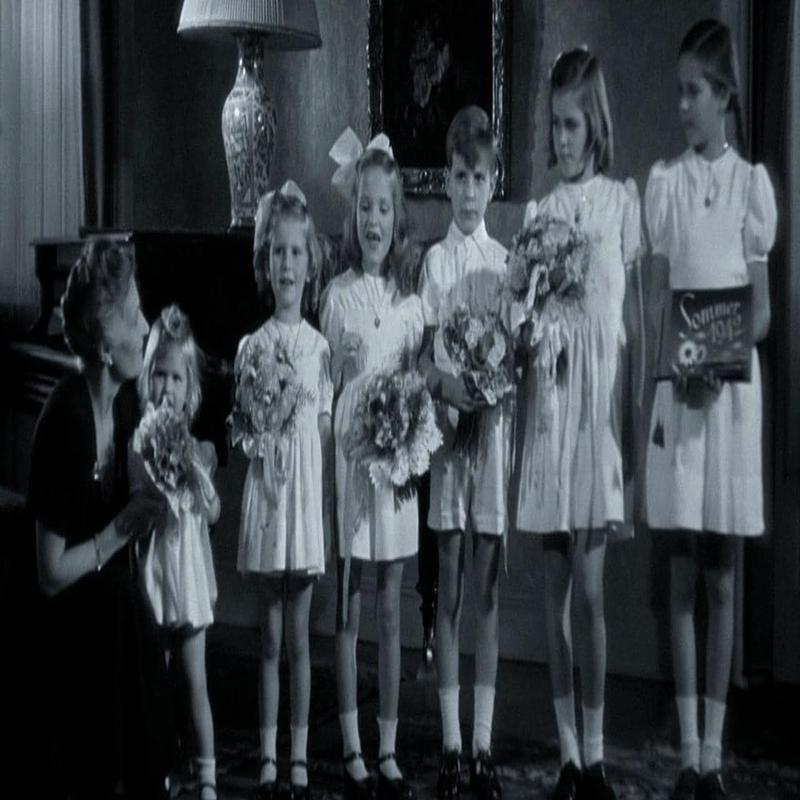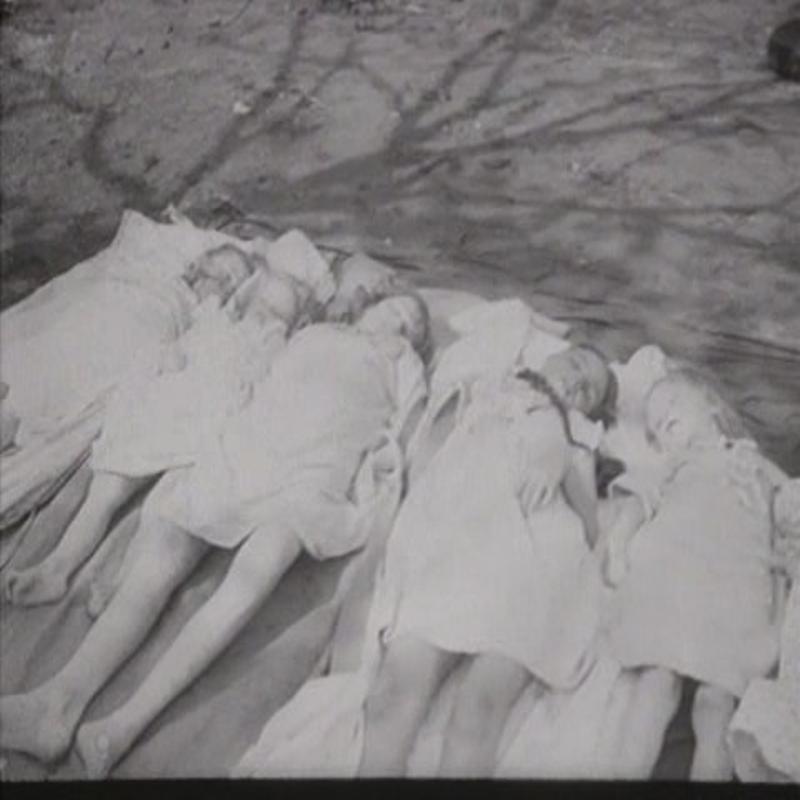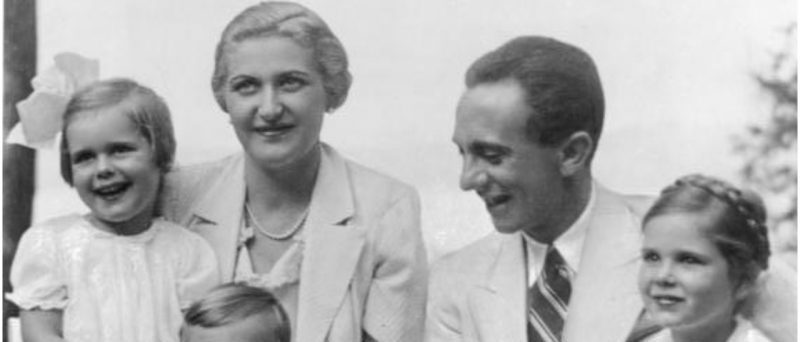Magda Goebbels: First Lady of the Third Reich
Posted on 27th February 2021
The future Johanna Maria Magdalena Goebbels was born on 11 November 1901, in Berlin. Her mother, Auguste Ritschel was briefly wed to one Oskar Behrend, an obscure businessman and Magda's father before divorcing him to marry the much wealthier Jewish financier, Richard Friedlander. Magda was fond of her stepfather and enthusiastically adopted his name continuing to use it right up to her first meeting with Joseph Goebbels despite its Jewish connections.
Her early life was conventional for someone of her class. She attended convent school and was by no means reluctant churchgoer. She was considered bright and intuitive despite an academic performance that was adequate at best; but then she wasn't expected to pursue a career merely to marry early and well, and this she did on 14 January 1921, when she wed the wealthy industrialist Gunther Quandt.

Quandt had worked hard to court Magda but almost lost her when he insisted she use her mother’s maiden name Ritschel and not refer to herself as Friedlander, a request she largely ignored.
On 1 November 1921, Magda gave birth to a son they named Harald but despite the early issue of offspring the marriage was never a happy one. Their union may have delighted Magda’s mother, but it had never done much for her and she was more attracted to her eighteen year old step-son Helmuth than she was to her husband something she did little to hide.
Despite the inauspicious start to their married life together Gunther tried hard to impress his wife taking her to the best places and showering her with gifts, but she had been raised in an environment of elegance and sophistication and such things did little to excite her.
As time wore on with Gunther often away on business trips, they saw one another only rarely and when they were together they argued violently, often in public. Convinced Magda was seeing other men in his absence he hired private detectives to keep her watch over her; whether his suspicions were borne out or not it was becoming increasingly their relationship had broken down and 1929 they divorced. With the strain of marriage removed friendship blossomed and Magda and Gunther were to remain on close terms for the rest of their lives.
Single once more Magda, was again able to enjoy the high life she so cherish but with no requirement to work and no responsibilities to speak of she was bored; but as far as Berlin high-society was concerned however she remained a good catch, rich, well-connected, desirable, and available.
Despite no more than a passing interest in politics she was persuaded by a friend to attend a Nazi Party Rally. Out of a growing sense of ennui if nothing else she agreed and to her great surprise not only found the atmosphere intoxicating but was mesmerised by the main speaker, the short, clumsy, acid tongued and utterly committed Joseph Goebbels.
Magda joined the Nazi Party in September 1930 and it wasn’t long after being introduced to Goebbels that they started courting. The fact that she was at the time believed to be having an affair with the Jewish political activist Haim Arlossrof seemed to bother neither party nor it was soon broken off. She was then no paragon of Aryan virtue, but neither was she a Nazi out of conviction but rather out of her love for one man, and he wasn’t to be her future husband.

Joseph and Magda Goebbels married on 19 December 1931, at Gunther Quandt's farm in Mecklenburg. Adolf Hitler was present as a witness, which delighted Magda for she had fallen hopelessly in love with the Nazi leader, but he was unavailable and it was said Joseph Goebbels was the next best thing. At least he provided her with access to the future Fuhrer. As far as Goebbels was concerned his new wife provided him with the money and social status he yearned for. But there were still one or two loose ends that had to be sorted out.
On 16 June 1933, Haim Arlossrof was murdered by unknown assassins as he strolled on a beach in Tel Aviv with his wife. Not long after Magda’s stepfather Richard Friedlander was arrested and sent to Buchenwald Concentration Camp where he died in 1938. With the skeletons in Magda’s closet having been removed the Goebbel’s could busy themselves with becoming Nazi Germany’s First Family.
The Nazi’s were keen to increase the birth rate and early on passed the Law for the Encouragement of Marriage which provided a one-thousand-mark loan to newly-weds that was reduced by 25% for every child they had. As soon as the fourth child was born the loan was wiped off altogether and the mother would be awarded a medal- the Cross of Honour of the German Mother. Magda had been awarded with her medal. In fact, she was to have six beautiful, blonde, blue-eyed children, an example to every woman in Germany. Her husband Josef was delighted confiding in his diary:
“The mission of women is to be beautiful and bring children into the world. After all, the bird pretties herself for her mate and hatches eggs.”
Magda would have agreed saying that:
“If a German girl must choose between marriage and a career, she will always be encouraged to marry because that is what is best for a woman.”
As a couple they appeared to be the very epitome of a good Nazi marriage, and neither could have been happier. They were not only setting the standard for Germany but were providing for the Fuhrer what he desired.

But the image was a facade, and it was far from a marriage made in heaven.
Goebbels was a notorious womaniser but then it was rumoured that Magda herself was not exactly chaste. But it was to be an affair that Goebbels had with the Czech actress Lida Barova that was to prove a step too far.
Magda had been willing to put up with her husband’s sexual indiscretions but an affair with an actress and a racially inferior one at that was an insult and a humiliation not just for her but for the Fuhrer and everything he stood for. She confronted Hitler with her allegations of adultery and demanded from him that Goebbels grant her a divorce. If he did not, then she would go public about the affair and create a scandal.
Their marriage had been portrayed to the public as the model for family life in Germany and Hitler himself had attended the wedding - a divorce was out of the question.
After a meeting where they bickered, swapped insults and argued loudly in the presence of the Fuhrer they were made to reconcile. Hitler who had taken Magda’s side from the outset and was understanding of her plight poured scorn on Goebbels. He was weak and he had brought shame upon himself and the Party, he told him. He would end his affair and the actress in question would be deported. He would behave as a husband should in the future and do so with decorum. Magda would remain the First Lady of the Third Reich he told her; while Goebbels would spend the rest of his life trying to regain the Fuhrer's favour.

During the war, Magda lived up to her reputation as the First Lady. She trained as a Red Cross nurse, travelled to work on public transport, continued to be the ideal German mother and like her husband made herself as visible as possible, but she was no fool and had been heard to remark as early as 1942, that the war was lost. But she confined her criticisms to private conversations. She was to all intents and purposes a good Nazi. Once, when questioned about her husband’s rabid anti-Semitism, she replied: "The Fuhrer wants it so, so Joseph must obey."
By mid-April 1945, Magda, Joseph, and their six children were living in the Fuhrer-Bunker beneath the Reich’s Chancellery in Berlin. Hitler, who had always adored Magda's children, was delighted that they were there. He would often invite them to his private study where they would eat chocolate cake and he would question them on their homework, and balance young Heldrun on his knee and tell him heroic stories while Magda looked on adoringly.
During the previous few months Magda had been ill. The stress of trying to keep her young family safe while also supporting her husband had taken its toll and she had even spent some time in a sanatorium. It was reported that the left side of her face was partially paralysed and that she would often request to be left alone. But now in the Fuhrer-Bunker even with the Red Army no more than a few hundred yards from the door, Magda felt reassured by the Fuhrer's presence. When she heard that Hitler intended to take his own life however, she became distraught. She rushed to his room and banged relentlessly upon the door until finally he opened it. She tearfully and hysterically begged him not to do it. She told him of her love, of how the children adored him, of how the world could not exist without him. He listened quietly for a moment but said nothing before closing the door again. Magda had to be forcibly dragged away and in a state of some distress.
Magda now determined to take her own life and that of her children. This was not the first time that she had spoken of doing so. The Armaments Minister Albert Speer, a close friend of Hitler's had long feared for the lives of Magda's children and now asked her if he could take them out of the Bunker with him when he left. Magda replied:
""My life belongs to Josef. The children belong to me."
Adolf Hitler and Eva Braun committed suicide on the night of 30 April 1945. On hearing of the news Magda and Joseph Goebbels resolved to do the same. In his Last Will and Testament, Joseph Goebbels wrote that his wife had determined to die alongside him in the Bunker and that had the children been old enough to make the decision for themselves they would have chosen to do likewise.
Magda could not bear the thought that her children would grow into adulthood in a world without Adolf Hitler. She wrote to her son Harald, a prisoner-of-war in North Africa:
"Our glorious idea is ruined and with it everything marvellous that I have known in my life. The world that comes after the Fuhrer and National Socialism is no longer worth living in and I therefore took the children with me, for they are too good for the life that would follow, and Merciful God will understand me when I give them their salvation."
At his trial for war crimes the SS Doctor Helmuth Kunz stated that he had been approached by Magda Goebbels to administer morphine to the children to relax them and send them into a deep sleep, but he denied poisoning them saying that he told Magda this was something he could not do. He claimed that it was another SS Doctor Ludwig Stumpfegger who had broken into small pieces the cyanide tablets which he then placed in the children’s mouths as they slept. But Stumpfegger is known to have been drunk at the time and the likelihood remains it was Magda who administered the poison.
The autopsy report on the children appeared to show that at least one of the children was awake at the time the poison was administered. The many bruises on the oldest girl Helga’s arms and body show that she put up a struggle.

The children who died at their mother’s hand were: Heidrun, aged 4, Hedwig, aged 7, Holdin, aged 8, Helmut aged 9, Hildegard, aged 11, and Helga, aged 12.
Those who remember seeing Magda later in the day said she sat for hours on her own playing patience and refusing to acknowledge or speak to anyone. Indeed, she rarely looked up from the table.
Late that afternoon Magda and Josef emerged from the Bunker and into the Reich Chancellery’s bombed and cratered garden. Witnesses remember Magda shaking uncontrollably and being unable to take the cyanide tablet that had been provided for her so Josef shot her in the head before turning the gun on himself. They were both then buried in a shallow grave and the bodies partially burned
Share this post:





